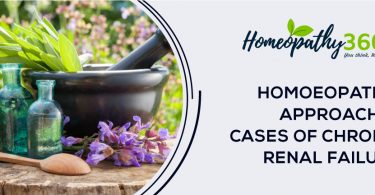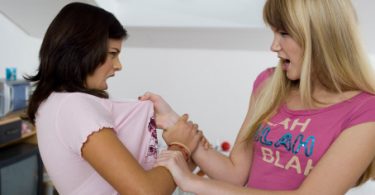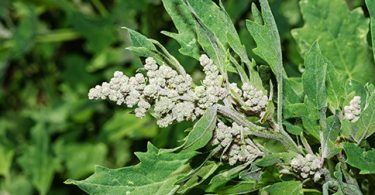
Following are the duties of doctor during cases of poisoning:
First and important duty of a doctor is to treat his/her patient followed by the other duties.
One must collect all the preliminary data either from patient (if in condition to talk) or from others in subjective manner.
Data as example: – full name, Age, Sex, occupation, Complete address of patient & person with him/her Date and time, who brought him/her
If necessary arrangement of dying declaration
@ It is not mandatory for a private practitioner to share his private record to the police or magistrate.
But if he/she is summoned by the investigating police officer or magistrate, they have to produce such record in front of police or magistrate.
@In cases of HOMOCIDAL POISONING:-
It’s the duty of doctor that he/she must inform the relative police station according to crpc 44 if there is any indication that someone tried to administer that poison to victim.
He/she must keep all the records of such cases in detail form.
He must collect and subsequently preserve the voided urine, vomiting of victim and stomach wash differently (separate).
He/she must collect the blood for further investigation and analysis of presence of any toxic material.
If he/she feels that victim is in danger (threat to life) then one must arrange a proper dying declaration.
If death occurs one should not issue death certificate, instead of that its very important to inform the nearest police station about the death (causes/scenario).
@In case of doctor working in government institution as in like PHC, RH or CIVIL HOSPITAL (DISTRICT), it is mandatory to inform about all the cases of poisoning such as, homicidal, accidental and suicidal which he/she is treating.
@ In cases of ACCIDENTAL POISONING:-
If it occurs in particular condition he/she must get aware themselves about the real cause to rule out the possibilities of HOMICIDAL POISONING.
If the poisoning is in general way as example food poisoning in particular function, poisoning of water and which hampered many people, poisoning due to gaseous substance he must inform to the police under sec 44 of crpc.
Most importantly he/she should not judge or place any opinion about poison before the report from forensic science laboratory.
General measures which physician should take after poisoning:
- Maintain the general condition
- In case of unabsorbed poison
- Antidote
- Removal of poison through excretory way
- Treatment
@ Maintain the general condition
Make patient comfortable and physically stable (without irritability). Apply worm cloth and maintain the proper homeostasis. Maintain the air passage unobstructed. Try to maintain this is a special hazard in elderly people, in those who were unconscious for an hour or more, in those who had had a respiratory infection before poisoning, and in those who inhaled a very small amount of vomitus. Proper consultation of PSYCHIATRIST prior to discharge is mandatory.
@ Unabsorbed poison
Inhalation of poisonous substance:
Take him/her in fresh air, if in need administer artificial respiration to clear air passage. Physician should verify that air passages should be kept free from mucous by postural drainage and aspiration. If need arrange oxygen cylinder.
@ Injected poison
Apply tight tourniquet proximal to the point of injection. It must be released every 10 minutes for 1 minute to prevent gangrene. Insulin, snake bite, insect bite and hypnotics are the common examples of poisons by injection.
Washing and cleaning of particular area can be the proper measure if the poison get spilled or sprayed on skin, eye or wound, or be inserted into vagina, rectum or urinary bladder.
@Ingested poisons
One can remove the poison from GIT ASAP with following methods:
- Vomiting
- Stomach wash
- Vomiting
In case of ingested poison physician can induce vomiting in patient if he/she is conscious and cooperative. For this one can administer 150 ml water + 2 table spoon of common salt, also vomiting can be induced by touching fauces.
- Stomach wash which is also known as GASTRIC LEVAGE:
Is lifesaving technique, but should not be contraindicated and shall be perform strictly within 4-5 HRS.
Technique:
- Create a position where area of hip is above the level of head so poisonous substance cannot be regurgitated again into trachea.
- If patient is in unconscious state place a mouth gag so he/she unable to bite the tube (to avoid rupture).
- Actual diameter of tube is lies between 12 to 13 mm.
- Length of tube lies between 1 to 1 &1/2 meter.
- A conical funnel is placed at the distal end of tube which works in filtration process.
- A rubber bulb is placed at the end of tube to create suction.
- The other end is blunt in nature, especially to avoid injury to inner lining area.
- Calculated distance between LIPS to CARDIAC NOTCH is about 45cm, where tube is marked at 50cm for proper placement of it.
- But in cases of emergency we can use any tube.
- Physician should use lubrication during insertion of tube to create easy pass and frictionless insertion of tube in stomach cavity. (liquid paraffin , milk product or glycerin)
- Physician can verify the entry of tube at proper place with the help of stethoscope.
- By administrating the warm water up to stomach level and then minimizing the level of funnel below stomach level one can achieve a wash subsequently one should collect the residual in kidney tray with the help of conical funnel.
- Physician can administer ANTIDOTE with the help of tube.
- In case of small child one can use tube with syringe for the purpose of suction.
- One should verify the presence of the poisonous material in tube before taking it out, so it can’t spill out at the time of retraction.
One should not perform stomach wash In following cases:
- In case of corrosive poisons (it may rupture the tube) exception CARBOLIC ACID.
- Poisons causing convulsions.
- Poisoning due to volatile substances.
- In case of severe physiological imbalance.
@ chelating substance
Those substances are especially used to create firm non ionized cyclic complex.
It can administer with intramuscular injections.
e.g.- EDTA is used in ARSENIC , LEAD , MERCURY AND COPPER POISONING.
@ Removal of poison through excretory way:
If in any case poison got absorbed in GIT, physician can eliminate it with excretory organs.
For accelerating the process of excretion i.e. URINE, one should administer the plenty of liquid in any way so it maintain diuresis.
@ Treatment:
indicated as per the symptoms.(particular physiological conditions).





